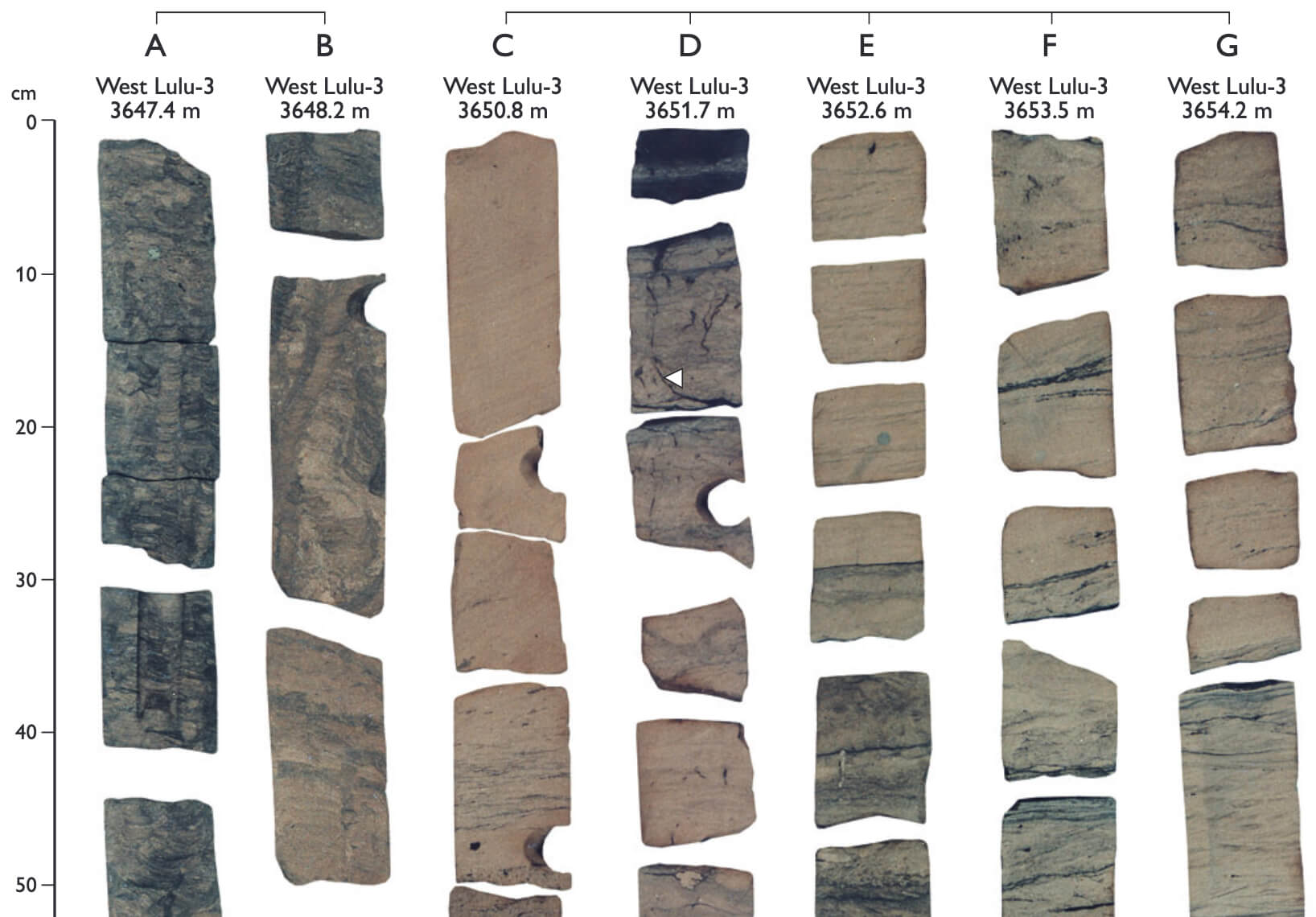
How to Cite
Share
Abstract
The Middle Jurassic Bryne and Lulu Formations of the Søgne Basin (northern part of the Danish Central Graben) consist of fluvially-dominated coastal plain deposits, overlain by interfingering shoreface and back-barrier deposits. Laterally continuous, mainly fining-upwards fluvial channel sandstones that locally show evidence for tidal influence dominate the alluvial/coastal plain deposits of the lower Bryne Formation. The sandstones are separated by units of fine-grained floodplain sediments that show a fining-upwards – coarsening-upwards pattern and locally grade into lacustrine mudstones. A regional unconformity that separates the lower Bryne Formation from the mainly estuarine upper Bryne Formation is defined by the strongly erosional base of a succession of stacked channel sandstones, interpreted as the fill of a system of incised valleys. Most of the stacked channel sandstones show abundant mud laminae and flasers, and rare herringbone structures, suggesting that they were deposited in a tidal environment, probably an estuary. Several tens of metres of the lower Bryne Formation may have been removed by erosion at this unconformity. The estuarine channel sandstone succession is capped by coal beds that attain a thickness of several metres in the western part of the Søgne Basin, but are thin and poorly developed in the central part of the basin. Above the coal beds, the Lulu Formation is dominated by various types of tidally influenced paralic deposits in the western part of the basin and by coarsening-upwards shoreface and beach deposits in central parts. Westwards-thickening wedges of paralic deposits interfinger with eastwards-thickening wedges of shallow marine deposits. The Middle Jurassic succession is subdivided into nine sequences. In the lower Bryne Formation, sequence boundaries are situated at the base of laterally continuous fluvial channel sandstones whereas maximum flooding surfaces are placed in laterally extensive floodplain or lacustrine mudstones. The unconformity that separates the alluvial plain deposits of the lower Bryne Formation from the estuary deposits of the upper Bryne Formation is interpreted as a sequence boundary that bounds a system of incised valleys in the western and southern parts of the basin. Sequence boundaries in the Lulu Formation are situated at the top of progradational shoreface units or at the base of estuarine channels. Maximum flooding surfaces are located within marine or lagoonal mudstone units. Marine highstand deposits are partitioned seawards, in the eastern part of the basin, whereas paralic transgressive deposits are partitioned landwards, in the west. This marked sediment partitioning in the uppermost part of the succession resulted from the alternation of episodes of fault-induced half-graben subsidence with periods of slow uniform subsidence.
How to Cite
Share
Downloads
Editors: Jon R. Ineson and Finn Surlyk
The Jurassic rocks of Denmark and East Greenland record the evolution of two discrete portions of the Mesozoic rift complex, now separated by the North Atlantic Ocean. The Jurassic of Denmark and adjacent areas occurs mostly in the subsurface and research has thus focussed [...]










